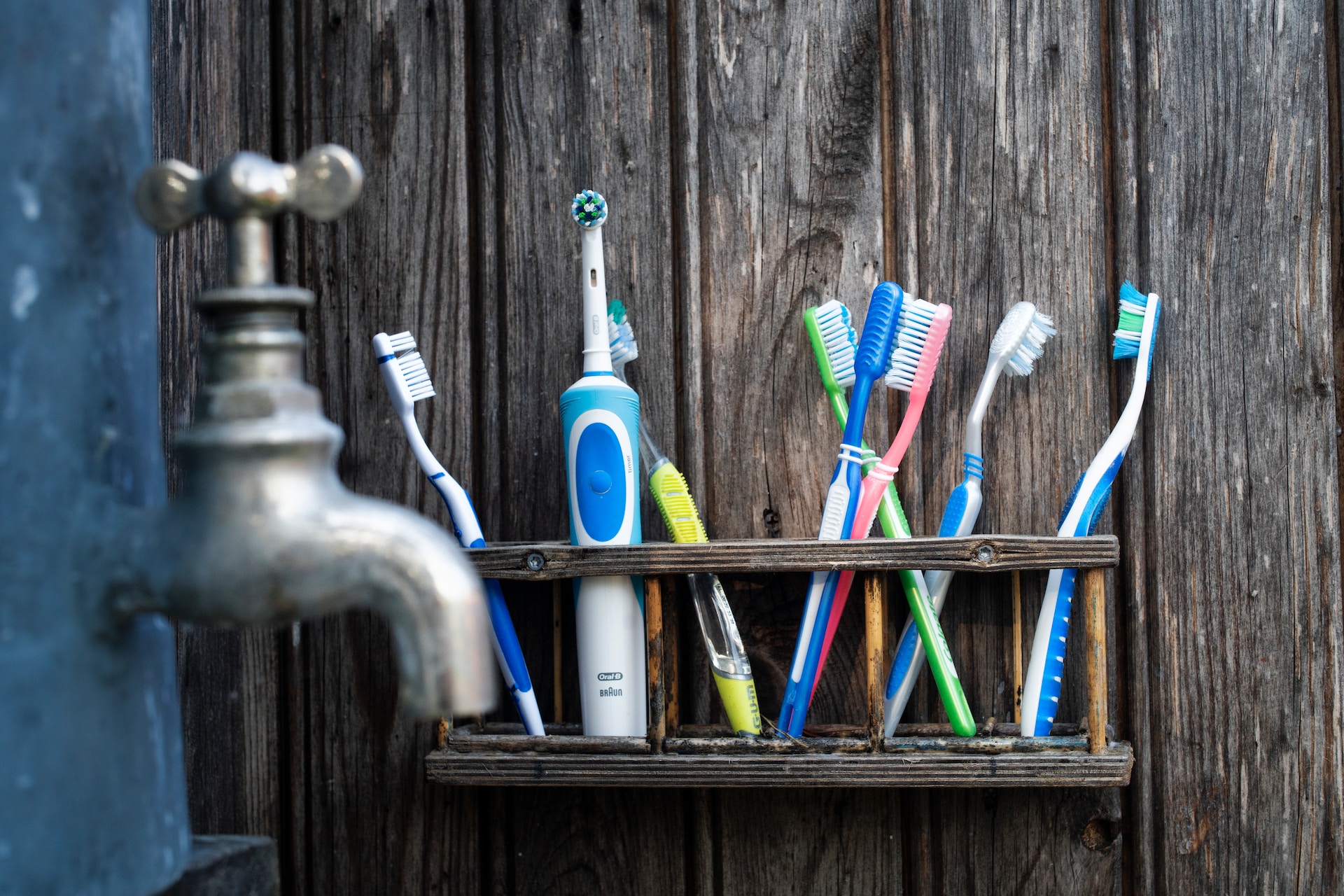
16 Aug Finding Your Perfect Toothbrush
Choices, choices, choices! Looking at the wall of toothbrushes in any store is enough to make your head spin. Picking out a toothbrush can seem like guesswork at times, so here is a little breakdown of toothbrush technology to help you find the right one.
How to Choose the Best Toothbrush
There are many different styles of toothbrushes, and they all have different types of bristles, handles, and heads. And while we could talk about the ins and outs of toothbrushes all day, we know you are busy.
In short, the ideal toothbrush is an electric one with a small head and soft bristles.
However, just because this one works for most people, you might need something a little different. If you want to learn more about different types of toothbrushes, read on!
Which Toothbrush Is Better—Manual or Electric?
The most important thing is that you are brushing your teeth twice a day and visiting the dentist regularly. But the type of brush you use can make a big difference.
A manual toothbrush is the standard toothbrush we are all familiar with. They come in a variety of shapes and sizes and require you to brush in a circular motion to remove plaque.
An electric toothbrush is an umbrella term for oscillating, sonic or ultrasonic toothbrushes. Oscillating means it provides extra movement, sonic uses audible vibrations to help loosen plaque and the bristles sweep it away, while ultrasonic uses higher vibrations to break plaque apart and push it away.
Let’s compare the pros and cons of manual and electric toothbrushes.
Manual Toothbrushes
Pros:
- They are affordable, with the average toothbrush costing less than $5.
- They do not require batteries or electricity.
Cons:
- You must use the right technique to remove plaque, and be careful not to brush too hard.
- They are more wasteful, as you have to discard and replace your brush every three months.
Electric Toothbrushes
Pros:
- They clean your teeth more thoroughly, and with less work than a manual brush.
- They create less waste, as you only need to replace the head of the brush.
Cons:
- You will need a charger or batteries to operate it, making travel difficult.
- They can be costly, with prices ranging up to and over $300.
Toothbrush Shape—Does It Really Matter?
When it comes to the shape of a toothbrush, you usually only need to worry about its size. A smaller head is better at cleaning hard-to-reach areas. However, finding a toothbrush that fits comfortably in your hand is important, too, especially if you have arthritis or any difficulty manipulating the brush.
Goldilocks and the Three Bristle Strengths
Soft, medium, or hard—which bristle strength is best? For 98% of the population, the soft bristles are best. They will keep you from brushing too hard and damaging your gums and tooth enamel. They also start to look worn sooner than harder bristles do, reminding you that you need to replace your brush every 3 months.
Which Type of Toothbrush Is Best for Kids?
When it comes to choosing the right toothbrush for your kids, we must stress the importance of a small head, especially for infants and toddlers. A toothbrush that is too large can cause pain and make brushing something they want to avoid. Our guide on making toothbrushing fun can help your child build good brushing habits.
Finding the Right Dentist Is Important, Too
Along with a good toothbrush, you also need a good dentist. Getting an exam and cleaning every six months is a crucial part of maintaining good oral health. You need a dentist that you like and trust, so you feel comfortable coming in for your appointments.
At Hicks Dental Group, our friendly dentists, hygienists, and staff can help you maintain the smile of your dreams. Contact us today for more information or to make an appointment.
Images used under creative commons license – commercial use (8/15/23). Photo by Henrik Lagercrantz on Unsplash.

